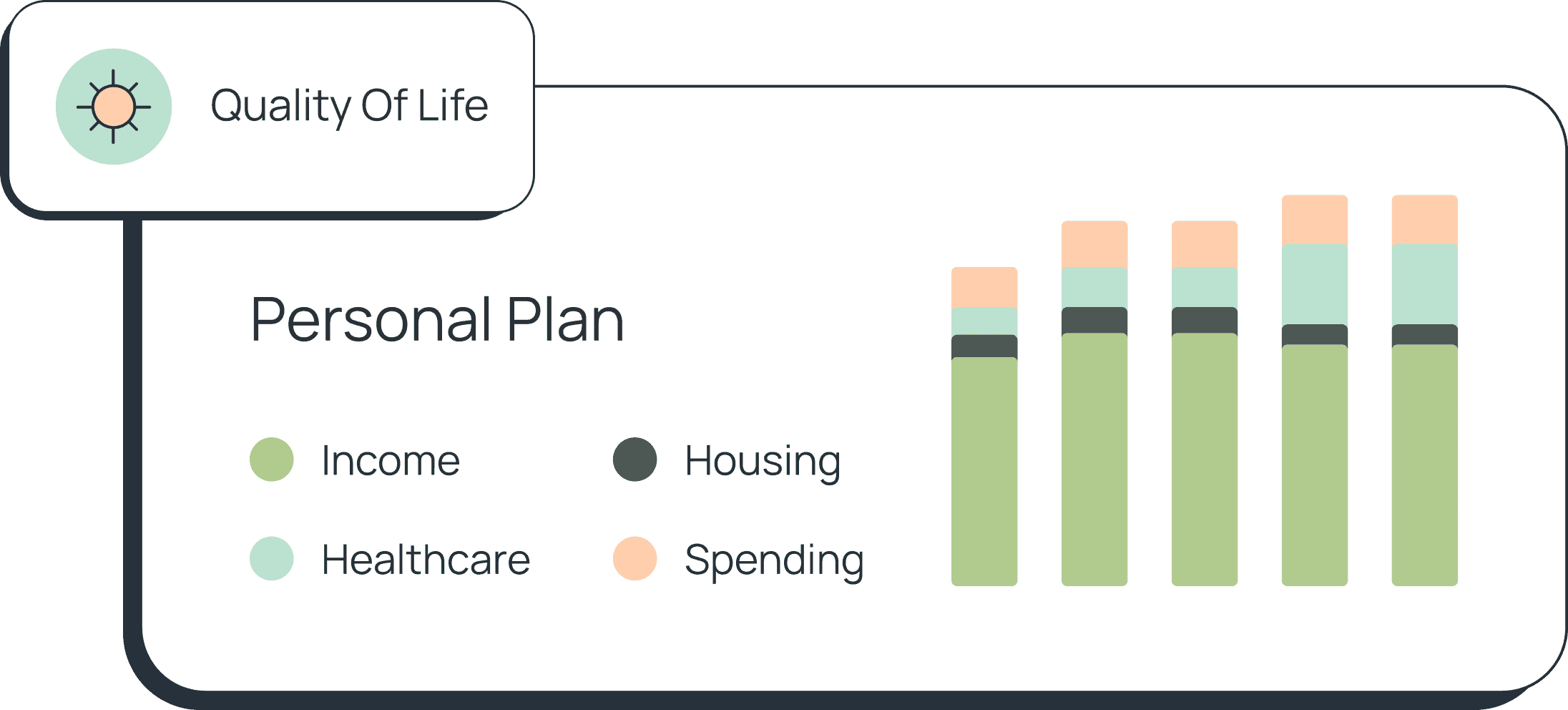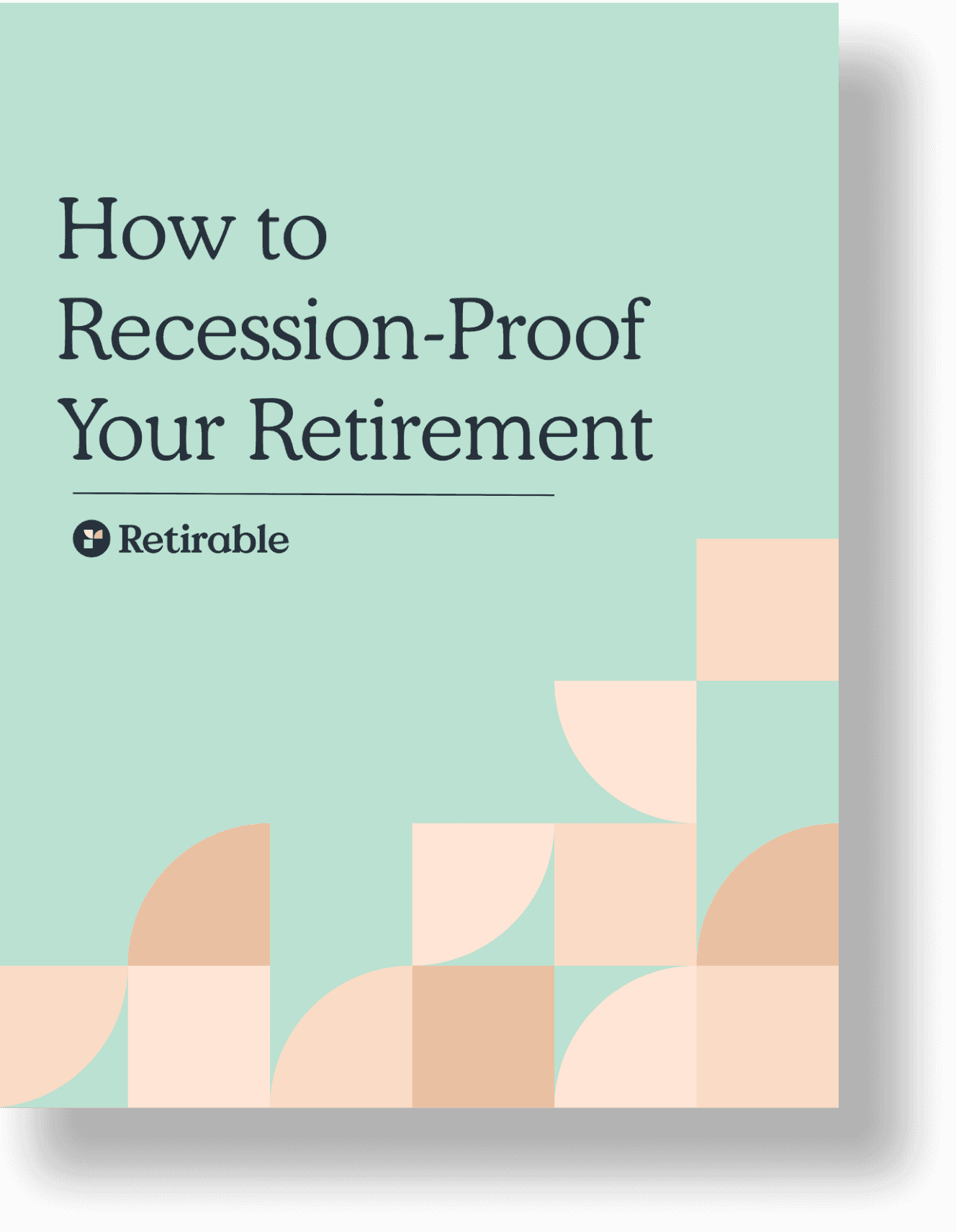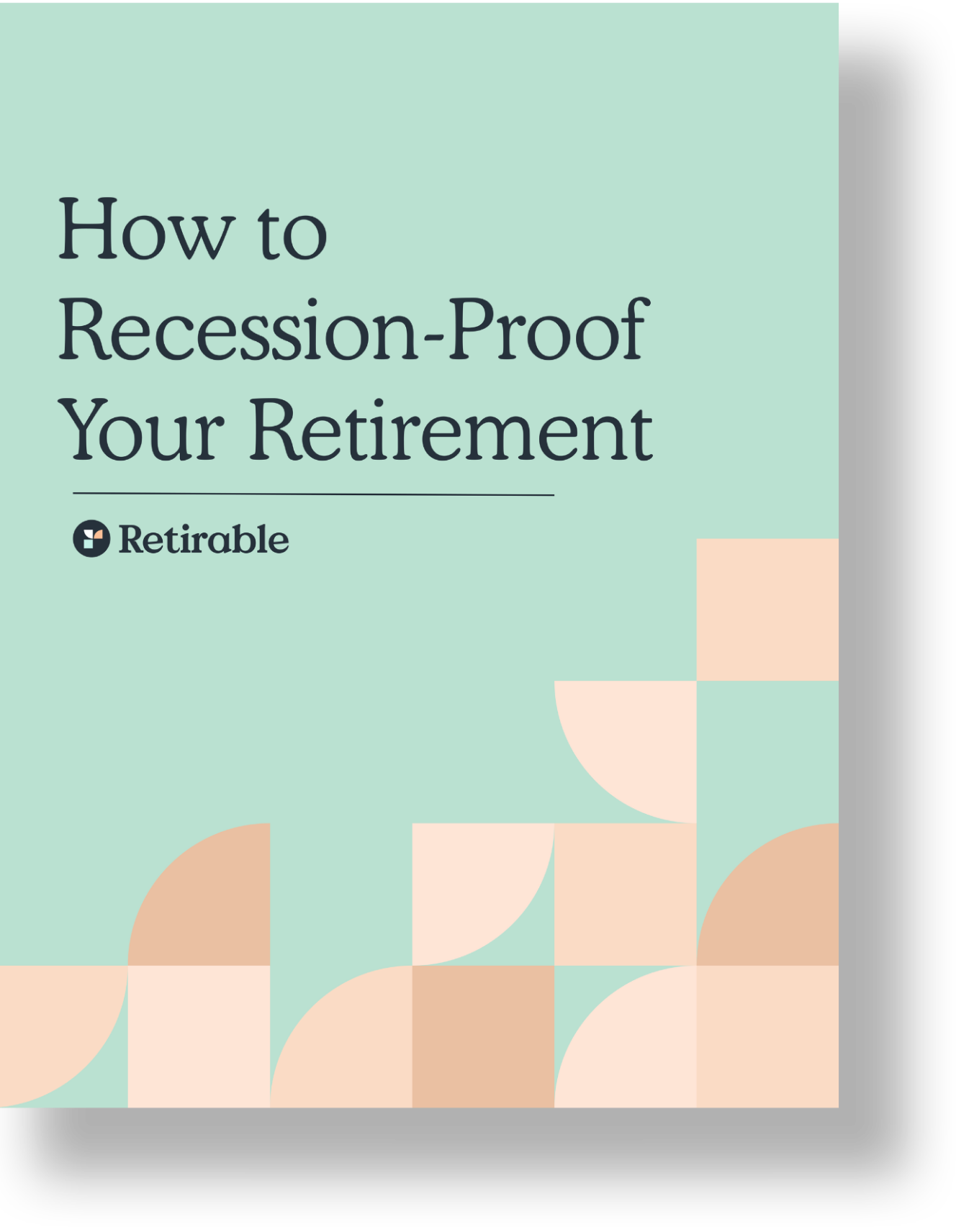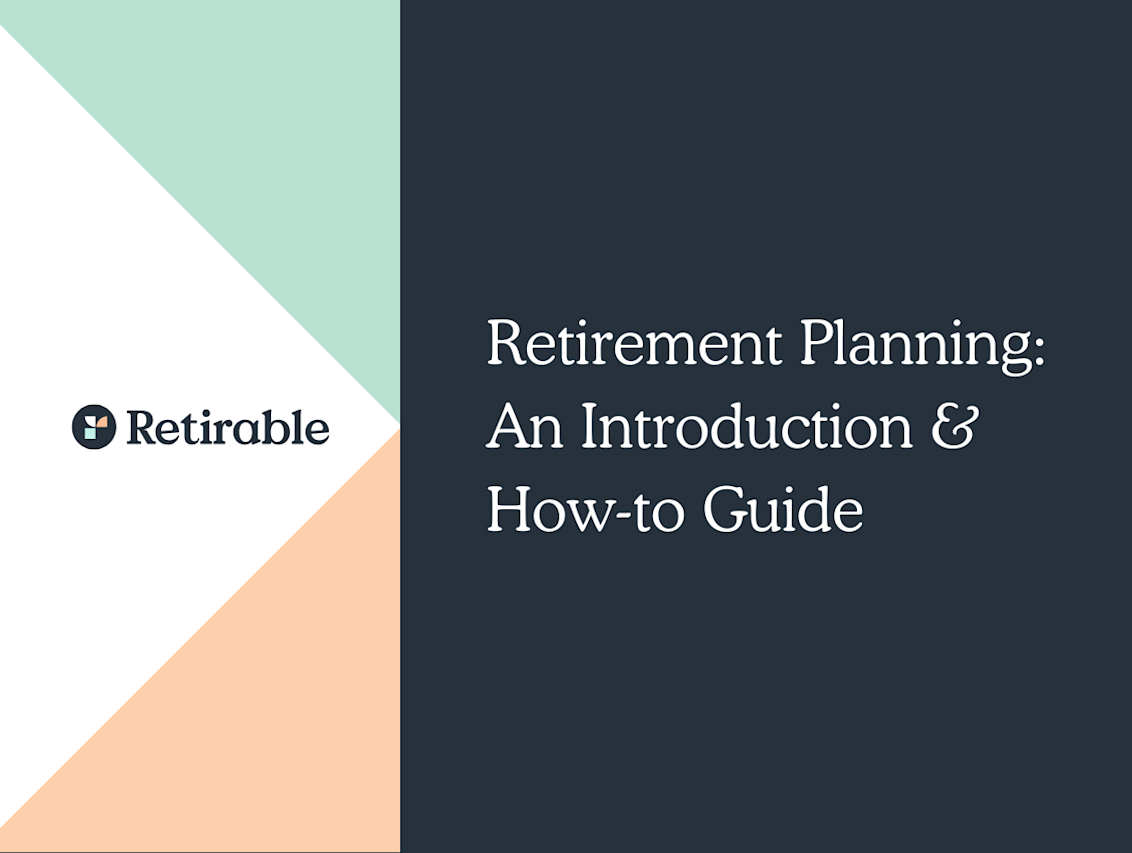Retirement Accounts
While saving enough money to get you through all your post-work years may seem daunting, a little goes a long way. Starting young, and focusing on putting away 10% or more of your income each year, can allow your savings to earn compounded interest and help you achieve those 9-to-5-free dreams.

C.E Larusso
•
Published September 13th, 2023
•
Updated December 28th, 2023
Table of Contents
Key Takeaways
Depending on your employer, you might get offered a 401(k) or a 403(b) retirement account—these are excellent tools to start building tax-deferred retirement savings
Saving 10% or more of your income each year, and taking advantage of any employer-matching contributions, is a critical core saving strategy
You can diversify your retirement strategy by looking at investments such as real estate and small business equity—an educated financial advisor can share additional tools
While saving enough money to get you through all your post-work years may seem daunting, a little goes a long way. Starting young, and focusing on putting away 10% or more of your income each year, can allow your savings to earn compounded interest and help you achieve those 9-to-5-free dreams.
While there is no single best way to save for retirement, putting in some time to identify your specific goals and learn about all the investment tools that exist to help you surpass those goals is the first step in the right direction.
How Much Should You Save?
A popular method to calculate how much you need to save is to assume you’ll need to replace 80% of your pre-retirement income for each year you’re out of work—this retirement income can come from a variety of sources, like your social security, pension, rental property income, or elsewhere. When calculating, assume you will receive 4–5% in annual returns from your retirement accounts (401(k), for instance) and then determine where the rest of the balance will come from. This method, of course, requires that you know when you will retire and how many years you’ll need income—it’s always best to calculate using conservative figures, to ensure you don’t run out of cash and have enough on hand for emergencies.
How much do you need to save?
We offer a retirement calculator where you can input your current savings, your goal retirement year, and your current age to get a snapshot of how much you might need to save.Another frequently shared method for calculating your savings goal is to multiply your pre-retirement income by 12—if you earn $65,000 a year, the goal would be to save $780,000 for retirement. This is a simplistic method, and doesn’t really account for the idea that you may wish to save extra for larger expenditures or inflation, which can fluctuate from year to year.
Using Investment Accounts to Reach Your Long-term Retirement Goals
Employer-sponsored retirement investment accounts—whether managed by the business you work for or managed by you, as a sole proprietor—are often the first step of creating a robust retirement plan. These accounts sometimes come with matching contributions from your employer, and, as is the case with the very-popular 401(k) and 403(b), have extremely high annual contribution limits, allowing you to get a big jumpstart on your savings goals, if you can set the money aside.
Many advisors recommend putting at least 10% of our annual salary into your retirement investment account annually to reach your savings goals. Since your contributions are pulled from your gross income, you’ll also see a nice tax break from making those contributions.
Types of Retirement Accounts
The different types of retirement accounts offered by your employer, or set-up directly by you if you are self-employed, have varying rules about taxes, withdrawals, and contribution limits. Get to know the ins and outs of each so you can maximize their benefits.
Saving with a 401(k) [For-Profit Employer]
Many for-profit companies offer 401(k) plans to their employees as part of their benefit package. When administered by your employer, these plans tend to be very easy to sign-up for, and sometimes come with matching contributions—meaning your employer will match, up to a certain percentage, the amount you contribute to your own retirement plan. This can help you boost your savings amount quickly, however some companies require you to remain an employee for a certain length of time (this is called the “vesting” period) for you to receive those contributions.
Typically, your contributions will automatically be deducted from your paycheck, and those contributions grow tax-free until you decide to withdraw them. Withdrawals from a 401(k) account are taxed as income, and you’ll get hit with a 10% penalty if you withdraw before you turn 59 ½, unless you qualify for very specific exemptions.
A big benefit to holding a 401(k) is the high yearly contribution limit. In 2025, the contribution maximum is $23,000, with an additional $7,500 allowed (a “catch-up” contribution) if you are 50 or older.
Saving with a 403(b) or 457 plan [Nonprofit Employer]
If you work for a non-profit or for the public sector, you’ll likely be offered a 403(b) or 457 retirement plan. Here is a quick definition of each:
- 403(b) plans are offered to employees at private not-for-profit companies and government workers, such as public school employees
- The 457(b) plan is offered to state and local government employees
- The 457(f) plan is for high-ranking executives at non-profits, and is a supplement to 457(b) plans
The 403(b) retirement plan is usually offered by organizations that qualify as a 501(c)(3), or a non-for-profit. Just like a 401(k), contributions are made on a pre-tax basis, and withdrawals are taxed as income; some plans do offer an after-tax option, if you’d prefer tax-free withdrawals in retirement. The contribution limits for 403(b) plans are the same as they are for 401(k) plans, except there are special catch-up limits for those ages 60 to 63—the limit jumps from $7,500 (after age 50) to $10,000, starting in 2025. In addition, if you have been employed for at least 15 years, you can make an additional $3,000 contribution per year, with a lifetime limit of $15,000.
Employers can make matching contributions to 403(b) plans, but the total contributions from both the employer and employee cannot exceed $69,000 for 2025.
In many ways, the 457(b) retirement plan is nearly identical to the 403(b) plan, except that it is intended for employees of government agencies, such as police officers, municipal workers, hospital staff, and other civil servants. Some nonprofit organizations, including churches and charities, may also offer 457(b) plans.
The annual contribution limits are the same as they are for 403(b) plans, and the catch up of $7,500 for those over age 50 applies. 457(b) plans also feature a “double limit catch-up” for those who are close to retirement to compensate for the years in which they did not contribute to their plan—employees who are within three years of retirement age may contribute up to $46,000. As with the 403(b), some plans feature a Roth, or after-tax contribution option.
While employers that offer 457(b) plans can match employee contributions, many do not.
Another 457 plan is the 457(f) plan. This is a supplemental plan to the 457(b), and is only offered to executives and highly-compensated workers at non-profits like hospitals, credit unions, or universities. This supplemental plan allows the employer to contribute an annual amount to the executive’s plan that exceeds the 457(b) contribution limit.
Employees offered 457(f) plans are usually locked into a vesting period and must stay employed at the organization for a set number of years to receive the extra contribution.
Saving with a Solo 401(k), Roth IRA, SEP-IRA [Self-Employed]
For those working solo, there are several retirement plan options to consider.
A Solo 401(k) is just what it sounds like—it’s a 401(k) plan for one person, a sole proprietor. It offers many of the same benefits of the traditional 401(k) plan a business might offer you: tax-deferred contributions and a high contribution limit, but also gives you the flexibility to choose the broker where you house your savings, which can open up a broader range of investment tools. Solo 401(k) plans are intended for one-personal businesses, however if your spouse is on payroll, they can also participate in the plan—a qualifying couple could save as much as $114,000 annually through a Solo 401(k), because even though the standard yearly contribution limits apply, as an employer you can make a profit-sharing contribution of up to 25% of your compensation from the business. There is a Roth, or after-tax, option for the Solo 401(k).
The Roth IRA is another retirement savings tool used by many self-employed people. With a Roth IRA, you’ll pay taxes on your contributions, but enjoy tax-free withdrawals when you retire; this can be a handy savings strategy if you suspect your retirement income will be higher than your current income. Very easy to set up, they are great starter retirement plans, though the contribution limit is low: only $7,000 in 2024 ($8,000 if age 50 and older).
An SEP-IRA can be useful if you run a small business. They are easier than 401(k) plans to set-up and maintain, and don’t require annual reporting to the IRS. The contribution limits are equal to the lesser of $69,000 in 2024 or up to 25% of compensation (with $330,000 the maximum compensation amount that can be used to calculate the contribution). There is no catch-up contribution allowed with SEP-IRAs.
SEP-IRAs are somewhat flexible; there’s no need to contribute every year, however you must make contributions for your employees and they must be equal in percentage of pay to the contributions you make for yourself. Thanks to the Secure Act 2.0, there is now a Roth version of the SEP-IRA.
How to Roll-over Your Retirement Accounts When You Leave Your Job
Whether you have voluntarily left your job, or you were laid off or fired, you might want to know what to do with your retirement account and all the money you’ve saved in it. You have a few options:
- Leave it be: You can absolutely let your 401(k) or 403(b) where it is if you’re happy with the investment options and fee structure. That said, it’s probable that you will forget about the account down the line, so it could be easier to consolidate all of your accounts (more on that later). Also, the fees may jump as you now won’t qualify for a reduced fee structure based on a group plan.
- Roll it over into an IRA: Whether you already have an IRA or this would be a new account, rolling your account into an IRA will likely open you up to a broader range of financial opportunities, could be a way of consolidating existing accounts, and should have lower monthly costs. While IRAs do have lower contribution limits, the limit does not apply as long as you rollover the account within 60 days of losing your job. You should also confirm that you’ll be rolling over into an account with the same tax status, so you aren’t hit with an unexpected tax bill next year.
- Combine with your new company’s plan: If you’re moving directly from one job to another, you can combine your old account with your new one, provided the account type is the same (i.e. 401(k) to 401(k)) and the new employer allows “roll-ins.” This could be a good idea if you want to see all your accounts in one place, but it’s possible that the new retirement plan is inferior to the old one.
How to Invest Your Money with Retirement in Mind
Here are some tips and guidelines to saving money with the goal of a comfortable retirement.
Start early
If you haven’t already started saving for retirement, start now. Every dollar counts, and the longer you have to let your money compound interest, the more you’ll have in the long run; $10,000 invested at age 20 would be worth nearly $90,000 if compounded at 5% annually. The same amount, invested at age 40, would only be worth $34,000. In addition, investing early in life means you’ll have more years to recover from any potential losses incurred from higher risk investments.
Pay down debts
Debts keep you from saving, so the sooner you pay them off the less you’ll pay in interest and the more you can put towards your retirement savings. Paying down debt should be one of a few short-term savings goals, but you might have some more to list, such as creating an emergency fund or saving for a down payment.
Diversify
While you should take advantage of your employer-sponsored plan to ensure you are making regular contributions to a retirement plan (and reaping the benefits of any employer-matching contributions), consider diversifying your investments into other vehicles so you can take varying risks, depending on your age and your goals. A reputable financial advisor can guide you based on your risk tolerance and savings goals; one way to set up your investments is to create a target-date fund that will automatically balance itself out as you get closer to retirement age.
Common Retirement Investments
If diversification is the name of the game, it’s wise to learn about the various investments you could use to grow your wealth as you inch closer to retirement.
Retirement accounts
Retirement accounts, such as 401(k)s, 403(b)s, and IRAs, are some of the most commonly used ways to save for retirement. For most people, it’s a no-brainer to enroll in them, as they are sponsored by their employer and sometimes feature matching contributions. In addition, several of these accounts allow your investments to grow tax-deferred.
Another workplace-sponsored retirement vehicle is a pension, or a defined-contribution plan. These types of retirement plans have lost some of their popularity, as ultimately, the risk of running pensions falls entirely on the employer, as they guarantee a certain retirement income for their employees. 401(k) plans, on the other hand, are subject to market fluctuations, and do not guarantee a certain outcome or amount.
Real estate investments
Whether you have a beach house you rent out for the summer or you are looking into REITs (real estate investment trusts), property is another common investment. Overall, real estate is one way to further diversify your portfolio.
A REIT trades like a stock on the major exchanges; it’s a security that owns and sometimes operates income-producing real estate, which can be anything from shopping malls to medical centers. REITs are considered one tool to hedge against inflation, though they do hold some of the same risks as any real estate investment.
Your current home, if you own it, can be another investment tool. You may plan to pay off most or all of your mortgage, and then sell your home to downsize and move somewhere less expensive, using the extra cash to fund your retirement. You could also opt to keep your home and rent it out after moving somewhere with a lower cost of living.
Investing in a small business
If you have confidence in a small business that is open to investors, you mgiuht consider backing it to reap financial rewards when it generates higher profits. You can purchase an equity investment, which means you pay the business in exchange for a share of it, effectively becoming a co-owner of it. You might also offer a debt investment, which is a loan that the business owner would pay off with interest over a pre-set period of time.
Using a Financial Advisor to Guide You Towards Retirement
Retirement planning is complex, and is different for everyone. You may wish to spend lavishly during retirement, while your best friend prefers a leaner lifestyle. In order to reach your individual goals, consider hiring a financial advisor.
A financial advisor can help you set up both short-term (pay off debt) and long-term (save for retirement goals) and develop a plan to get you to your goals, with milestones along the way. They can also help you figure out where to invest your money, and can sometimes advise on things such as taxes.
In addition, an advisor can help you weather financial storms and navigate complicated world events that might trigger heightened inflation rates. Consider hiring a fiduciary, so you can rest assured your advisor is only making moves that are in your best financial interest.
Share this advice

A professional content writer, C.E. Larusso has written about all things home, finance, family, and wellness for a variety of publications, including Angi, HomeLight, Noodle, and Mimi. She is based in Los Angeles.
Share this advice

A professional content writer, C.E. Larusso has written about all things home, finance, family, and wellness for a variety of publications, including Angi, HomeLight, Noodle, and Mimi. She is based in Los Angeles.
Free Retirement Consultation
Still have questions about how to properly plan for retirement? Speak with a licensed fiduciary for free.






